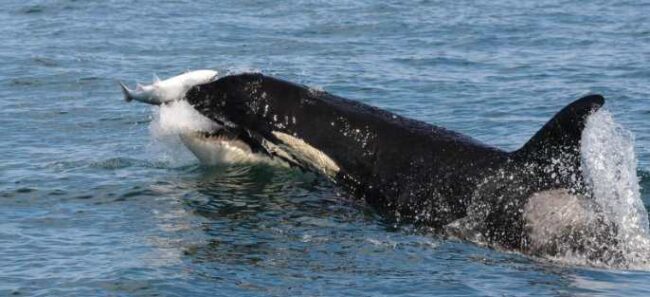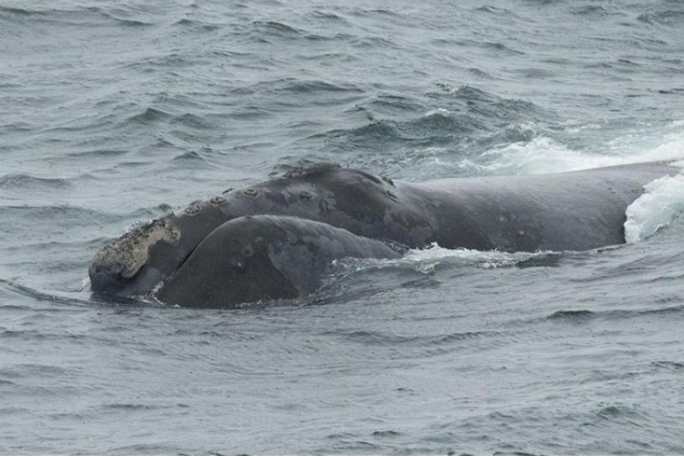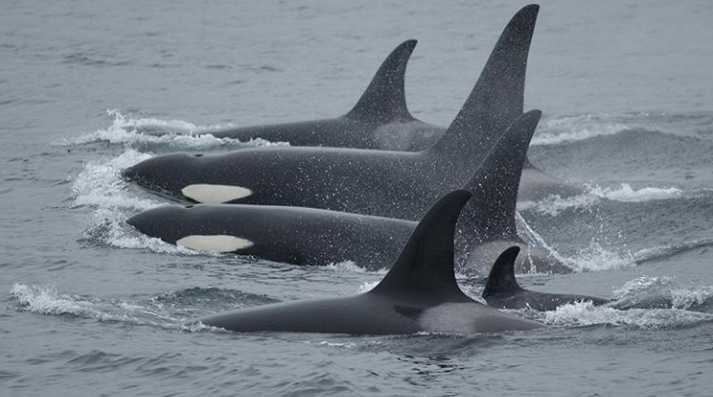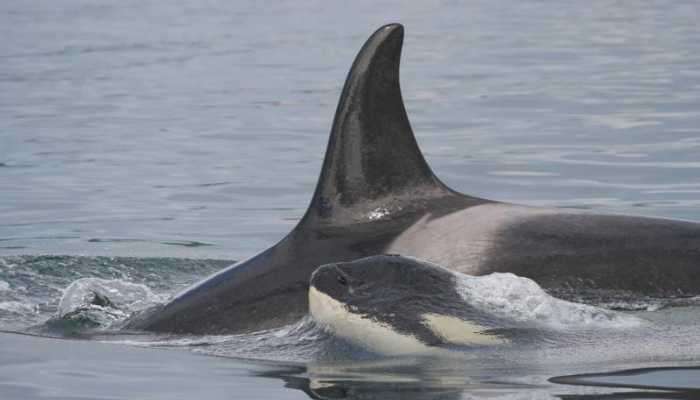New research aims to understand how two populations of North Pacific resident killer whales find food and what they eat.

Scientists studied two populations of fish-eating killer whales: the Southern Residents and the southern Alaska residents. They wanted to know if these two populations of fish-eating killer whales eat different things and how their diets change throughout the year. This information will improve our conservation efforts.
The Alaska resident killer whale population appears healthy and has been growing. But Southern Resident killer whales are endangered and are one of NOAA Fisheries’ Species in the Spotlight. Decades of research have identified four major threats to their survival:
- Vessel traffic noise and disturbance
- Health issues linked to contaminants
- Issues related to inbreeding
- Limited prey availability.
These factors potentially interact and amplify each other’s effects.
Researchers for the study were from NOAA Fisheries, the University of Washington’s School of Aquatic and Fishery Sciences, and the North Gulf Oceanic Society.
Resident Killer Whales Share a Preference For Salmon, But There Are Differences
The scientists employed a non-invasive approach, analyzing fecal samples collected over multiple years from both populations. By identifying fish prey species from DNA in the scat, researchers reconstructed dietary profiles for each population.
They found the two populations have remarkably similar diets. Both seem to share a love for Chinook, chum, and coho salmon. And both populations supplement their salmon diets with an array of other fish species, but what those species are differs by region.
One key difference between the two populations is that Southern Residents rely more heavily on Chinook salmon, especially during summer months. Meanwhile, the southern Alaska residents eat more chum and coho during the summer.
The researchers also found some variation in diet among different pods (family groups) of whales within the Southern Resident population. This may be due to the whales following traditional foraging patterns that they learned from their mothers and grandmothers. The three Southern Resident pods share a very similar foraging habitat, while killer whales in southcentral Alaska were divided into two geographically distinct foraging groups with different diets.
Southern Residents’ Dietary Shift and Nutritional Concerns
These findings offer valuable insights for the conservation and recovery of Southern Residents. Their dependence on Chinook salmon highlights their vulnerability to declining prey.
During the months when Chinook salmon are less abundant, the whales appear to be switching to other salmon and fish species. These alternative prey sources likely offer lower nutritional value compared to Chinook salmon. This potential decline in food quality could contribute to the observed decrease in the whales’ body condition outside of summer. Knowing this, we can better predict how these whales will do if there are fewer salmon in the future.
Understanding these differences can help us identify areas where the whales are most vulnerable to competition for food from other predators, such as seals and sea lions.
Ultimately, this information can help us develop conservation strategies that consider the needs of different whale populations and pods.








